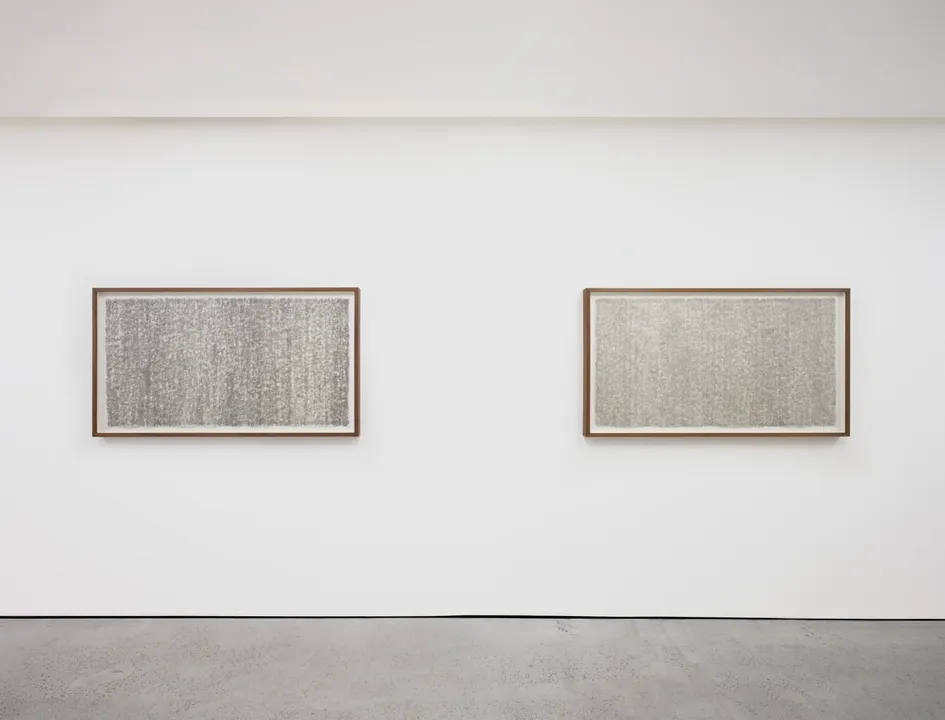LEE JIN WOO
White Cube anounces the first-ever solo exhibition in Hong Kong of Paris-based Korean artist Lee Jin Woo. Deeply immersed in traditional Korean aesthetics, Lee’s paintings and works on paper are framed by philosophical enquiry and driven by artistic intuition.
June 1 - September 7, 2024
Regarding abstraction as an entry point to the universal, the artist seeks to induce a state close to meditation in the consciousness of the viewer through his work. The result of total submission to an ascetic process engaging mind, body and spirit, the artworks engender a heightened physical awareness and are themselves an embodiment of a sentient, ‘breathing’ presence.
Further to a conceptual exercise, Lee approaches his work materially by drawing his principal mediums from the earth and transforming these through ritualised repetition. Subjecting charcoal and hanji – a traditional Korean paper made from the bark of mulberry tree – to a painstaking process of transformation, abstract ‘landscapes’ emerge: mutable and profoundly contemplative, these paintings evoke a sense of endless space.
Born in Seoul in 1959, Lee moved to Paris during the 1980s, studying for many years at the École des Beaux-Arts. He returned to Korea in 1993, building a studio on a mountainside outside Seoul in the late ’90s in order to work in harmony with nature and to hone the methodological aspects of his practice. Finally returning to Paris in 2005, he has lived and worked in the city ever since.
The artist’s work is the result of a labour-intensive process, which begins with the grinding of charcoal that is then filtered and mixed with adhesive. This mixture is used to coat a ground of linen that is then entirely covered with hanji, an act that the artist sees as a form of personal ‘invalidation’. Lee then rubs the surface down, scraping and beating it with an iron brush repeatedly, over a period of two to three months.
Lee’s paintings comprise thickly accumulated material, applied in such a way that it renders rough surfaces with dimensional relief upon which light and shadow can play to infinite variation in tone and effect. Appearing geological rather than manmade, the accretions on the surface of his work are suggestive of glacial epochs and vast passages of time.
Comprising repeated phrases in calligraphy drawn directly onto hanji, the works on paper are palimpsests that register a self-erasing script. ‘It is more like endless action and labour rather than simply covering up an image after it’s painted,’ Lee states. ‘I have been continuing this act of concealing and invalidating for over 30 years.’


